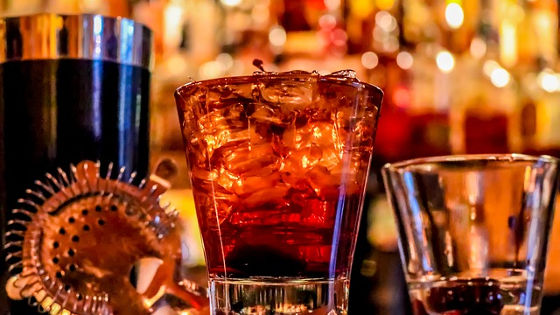
Many parents believe that current 'drug policy' serves them well and is the best strategy regarding the health and welfare of their children. This could not be further from the truth.
 Following is a discussion on 'drug policy' and its consequences for
the young. Reading time: approximately forty minutes.
Following is a discussion on 'drug policy' and its consequences for
the young. Reading time: approximately forty minutes.
PARENTS: YOUR CHILDREN AND 'DRUGS'
Apart from alcohol use, the most dangerous circumstance that parents should be aware of regarding the use by their children of depressant drugs such as alcohol and opioids etc., is the combining of substances leading to multiple-drug toxicity. Heavy sedation due to a combination of drugs resulting in airway obstruction and asphyxiation, is a common cause of death and injury. The phenomenon is not widely recognised or understood due to being incorrectly described as 'overdose'.
Skip to your children and:
INTRODUCTION
If you are a parent content with current 'drug policy' and believe it is the best way of protecting your children from drug-related harm, the information on this page will be of interest.
THE YOUNG AND THEIR MOST DANGEROUS DRUG
The most dangerous drug for young people is alcohol. Although alcohol is an extremely toxic and dangerous drug in terms of its effects on the human body, its danger for this age group is predominately because it reduces inhibitions. This can result in people undertaking risk-taking and aggressive behaviour.

Alcohol, the world's favourite depressant drug and the most dangerous drug for the young.
Some examples of disinhibited behaviours due to alcohol that commonly result in harm are dangerous driving, unsafe sex, sexual assault and fighting. Alcohol-related harm takes on many forms, many of which are felt by those who fall victim to another's alcohol-affected behaviour, for example, being assaulted by an intoxicated person.
If the behaviour of using the most dangerous drug for young people was to be addressed without exception and according to current 'drug policy', people found in possession of alcohol would be arrested and involved in the criminal justice system. Manufacturers of alcohol and those selling it would also be arrested and involved in the criminal justice system. Assets acquired with money derived from the sale of alcohol would be forfeited to the state.
CURRENT 'DRUG POLICY': WHAT PARENTS SHOULD CONSIDER
From the viewpoint of parents, there are some fundamentally important concepts and points of interest regarding current 'drug policy' that should be acknowledged:
Current policy not related to harm done
The intention of current 'drug policy' (the 'War on Drugs') is in no way concerned with protecting people, including the young, from drug-related harm. If it was the case that current policy was actually concerned with drug-related health and welfare, the use and supply of the two most dangerous drugs, alcohol and tobacco (and caffeine) would be addressed by it.
So, it is essential for parents to realise that obviously, current 'drug policy' is not in any way, a response to the danger of any particular substance or the welfare of the people that use them.
The real motivation
The real motivation for current 'drug policy' is political advantage brought about by the acquisition of public money from government or money from the black market in substances other than alcohol, tobacco and caffeine.
An intentional policy regime
Dangerous, unethical and inequitable as it is, current 'drug policy' is entirely intentional. It is not 'failed' or 'bad' policy. It continues because it delivers political gain due to being financially beneficial to many people.
Governments and 'drug policy'
Governments, certainly in the 'western' world, currently impose a regulatory regime that facilitates the following:
 Alcohol, the most dangerous drug for young people, is advertised and otherwise
promoted in an essentially unrestricted manner. Young people are surrounded by the promotion and glorification of alcohol, particularly through its
association with sport and its pseudo legitimacy as a 'legal' drug. So, ironically, governments typically facilitate an environment for young people
that is 'awash' with their most dangerous drug.
Alcohol, the most dangerous drug for young people, is advertised and otherwise
promoted in an essentially unrestricted manner. Young people are surrounded by the promotion and glorification of alcohol, particularly through its
association with sport and its pseudo legitimacy as a 'legal' drug. So, ironically, governments typically facilitate an environment for young people
that is 'awash' with their most dangerous drug.
 Young people can be forcibly involved in the criminal justice system for the act
of possessing their drug of choice if that substance is other than alcohol, tobacco or caffeine. They can also be subject to criminal sanctions for
involvement in the supply of substances other than alcohol, tobacco or caffeine. The involvement of a young person in the criminal justice system
can have long-lasting and harmful consequences for them.
Young people can be forcibly involved in the criminal justice system for the act
of possessing their drug of choice if that substance is other than alcohol, tobacco or caffeine. They can also be subject to criminal sanctions for
involvement in the supply of substances other than alcohol, tobacco or caffeine. The involvement of a young person in the criminal justice system
can have long-lasting and harmful consequences for them.
One of the greatest ironies in current 'drug policy' is that it effectively obligates the young to use the most dangerous drugs (alcohol and tobacco), by having criminal sanctions attached to the use of less-dangerous substances.
 The 'legal' drug industry is able to influence policy and legislation by
donating to political parties. Donations to political parties can result in legislation that benefits the donor.
The 'legal' drug industry is able to influence policy and legislation by
donating to political parties. Donations to political parties can result in legislation that benefits the donor.
Governments and the truth
There are two points in particular relating to drugs, about which governments and their agencies do not tell the truth:
 Current 'drug policy' is portrayed as a mechanism to protect the health and
welfare of people. However, this portrayal is completely misleading and incorrect. If current policy was actually concerned with protecting health
and welfare and its policy mechanisms were used without exception to this end, criminal sanctions would be imposed on the users and suppliers of
alcohol, tobacco and caffeine.
Current 'drug policy' is portrayed as a mechanism to protect the health and
welfare of people. However, this portrayal is completely misleading and incorrect. If current policy was actually concerned with protecting health
and welfare and its policy mechanisms were used without exception to this end, criminal sanctions would be imposed on the users and suppliers of
alcohol, tobacco and caffeine.
Furthermore, current 'drug policy' creates and nurtures a vibrant black market, which ensures widespread availability of the very drugs it is portrayed as being employed to restrict.
 Heroin (morphine) is portrayed as a drug whose use can lead to death or injury
due to 'respiratory depression' brought about by taking 'too much' (an overdose). This portrayal however, is incorrect. The myth of fatal
'heroin overdose' has long been known to be just that: a myth.
Heroin (morphine) is portrayed as a drug whose use can lead to death or injury
due to 'respiratory depression' brought about by taking 'too much' (an overdose). This portrayal however, is incorrect. The myth of fatal
'heroin overdose' has long been known to be just that: a myth.
When opioids are involved in a drug-related adverse event, it is as part of a combination of drugs (most commonly with alcohol) resulting in heavy sedation and airway obstruction. This can lead to asphyxiation.
This phenomenon, multiple-drug toxicity, is not unique to combinations of drugs involving opioids: it occurs with many other combinations of substances that do not involve opioids.
The acknowledgement that governments and their agencies are capable of not telling the truth, is essential for any parent in understanding current 'drug policy' and how it effects their children.
Manufacture of substances
The manufacture of drugs other than alcohol, tobacco and caffeine is unregulated due to their supply being criminalised. The actual composition (quality) and dose amount (strength) of a drug from an unregulated source is therefore unknown. This can have dangerous consequences for users.
Drug education and information
Drug education and information is often intentionally and dangerously incorrect. Consider the hypothetical scenario of a young person being curious about using a central nervous system depressant drug other than alcohol. They have been taught throughout their lives that the biggest danger to them is 'overdose', i.e. the consumption of 'too much' of a particular drug.
Due to its illicit nature, they firstly consume alcohol to give them courage to procure and use the substance. Soon after, they take the drug they are curious about, unaware of the danger of mixing drugs. Due to having two central nervous system depressant drugs in their system, they become heavily sedated and suffer airway obstruction resulting in asphyxiation. They suffer brain damage due to lack of oxygen and spend the rest of their lives disabled.
This scenario has been played out in reality many times, often with death being the consequence. This situation is largely due to young people being incorrectly informed on the safe use and true nature of psychoactive substances ('drugs').
A complex irony in regards to parents, their children and current 'drug policy', is that the most dangerous drug for young people (alcohol) is also the drug of choice for many of their parents. The strategy of criminalising young people for using drugs less dangerous than alcohol however, is not honest, humane nor constructive. It only leads to immense, preventable harm.
DANCE EVENTS, WATER AND HYPERTHERMIA
A phenomenon that has claimed the lives of several young people attending 'dance' or 'rave' parties is dilutional hyponatremia, or put simply, water poisoning. This is a condition where the blood level of sodium becomes too low and the brain absorbs too much water due to an upset in the osmotic balance. Swelling of the brain can cause seizures and in the worst case scenario, the brain can be irretrievably damaged, causing death.

Image: anna-m. weber
Grossly excessive water intake can be prompted by advice to 'hydrate' pre-emptively in the context of prolonged physical activity such as dancing. It is common for these deaths to be prematurely and incorrectly labeled as 'drug overdoses' or otherwise misattributed to ecstasy. A detailed account of hyponatremia is given here.
Another danger for those attending these events is simply getting too hot (hyperthermia). Prolonged dancing closely surrounded by others or simply being outside on a hot day can lead to people becoming dangerously hot. It is inevitable that open-air festivals held in the summer with a combination of high temperatures and limited shade for patrons, experience high numbers of attendees suffering from hyperthermia.
OPIOIDS SUCH AS HEROIN
 Many parents believe that should their child take 'too much' heroin, they
will be in danger of 'respiratory depression' leading to brain injury or death. In other words, the belief is that the person's breathing will slow
to a dangerous rate or actually stop. This is the long-standing myth surrounding heroin and other opioids (natural or synthetic substances that act
on opioid receptors in the brain).
Many parents believe that should their child take 'too much' heroin, they
will be in danger of 'respiratory depression' leading to brain injury or death. In other words, the belief is that the person's breathing will slow
to a dangerous rate or actually stop. This is the long-standing myth surrounding heroin and other opioids (natural or synthetic substances that act
on opioid receptors in the brain).
However, an overdose of heroin (morphine) does not stop people breathing effectively. There has never been any evidence to support the concept of fatal 'heroin overdose' and there is a clear and unequivocal body of evidence showing it does not happen. Refer to the 'Heroin' page for a comprehensive explanation.
The situation that can be life-threatening is actually a combination of substances. A mixture of central nervous system depressant drugs can cause heavy sedation. When people are heavily sedated, they can experience airway obstruction, which means that the passage of air to and from the lungs is prevented or restricted by structures in the throat. This is brought about by poor head, jaw (and therefore tongue) positioning that the person cannot remedy due to being profoundly sedated. The presence of vomit can also cause or add to airway obstruction.
This situation is unrelated to an effect on the breathing reflex, controlled by the central nervous system. Heavy sedation and airway obstruction can occur with combinations of many types of 'depressant' drugs: it does not apply only to mixtures containing an opioid.
Comprehensive explanation of this phenomenon on the 'Overdose' page
Two fundamentally relevant scenarios regarding the taking of heroin (morphine) or any other opioid from the perspective of a parent are:
 Your child takes heroin with no other central nervous system depressant drugs in
their body (this includes some medications). The vast majority of people become extremely nauseas due to the morphine and have an episode of
vomiting. Most people quickly develop a strong dislike of the drug.
Your child takes heroin with no other central nervous system depressant drugs in
their body (this includes some medications). The vast majority of people become extremely nauseas due to the morphine and have an episode of
vomiting. Most people quickly develop a strong dislike of the drug.
 The following scenario, involving alcohol, can easily result in injury or
death. It is therefore the situation that you, as a parent, should be very aware of. Your child is intoxicated on alcohol and is not aware of the
dangers of mixing drugs. They then take an opioid such as heroin (morphine). They become heavily sedated (unconscious) from the combination of
drugs. They then develop breathing difficulties due to airway obstruction, which can be more severe due to vomiting.
The following scenario, involving alcohol, can easily result in injury or
death. It is therefore the situation that you, as a parent, should be very aware of. Your child is intoxicated on alcohol and is not aware of the
dangers of mixing drugs. They then take an opioid such as heroin (morphine). They become heavily sedated (unconscious) from the combination of
drugs. They then develop breathing difficulties due to airway obstruction, which can be more severe due to vomiting.
If their airway (and therefore breathing) is not immediately monitored and if necessary, supported, injury or death can easily result. Again, it must be emphasised that the cause of the dangerous sedation in this example is not any particular drug, it is a combination of drugs. Of the two drugs in this example, alcohol is the most dangerous due to its long duration of action, its association with vomiting and the presence of large amounts of liquid in the stomach.
HYPOTHETICAL OR REALITY?
Consider a hypothetical scenario regarding 'drug policy' and the young. It is decided that employing a policy designed to create maximum danger and harm regarding psychoactive substances and young people, is a desirable strategy. Policy mechanisms are developed to achieve this, and are as follows:
 Those supplying the young's most dangerous drug (alcohol), are permitted to
influence policy and legislation by way of political donations
Those supplying the young's most dangerous drug (alcohol), are permitted to
influence policy and legislation by way of political donations
 Advertising and promotion of alcohol is permitted at saturation levels and
the alcohol industry is able to sponsor sporting codes, giving them maximum exposure to young spectators at events and those watching via various
media
Advertising and promotion of alcohol is permitted at saturation levels and
the alcohol industry is able to sponsor sporting codes, giving them maximum exposure to young spectators at events and those watching via various
media
 The government itself is involved in promoting and maximising the export of
alcohol via a taxpayer-funded body
The government itself is involved in promoting and maximising the export of
alcohol via a taxpayer-funded body
 Law enforcement agencies are charged with forcibly involving in the criminal
justice system, those young people who make a choice to use drugs less dangerous than alcohol. This situation effectively obligates many of them to
use alcohol, the most dangerous drug for the young.
Law enforcement agencies are charged with forcibly involving in the criminal
justice system, those young people who make a choice to use drugs less dangerous than alcohol. This situation effectively obligates many of them to
use alcohol, the most dangerous drug for the young.
 The supply of drugs less dangerous than alcohol is legally prohibited, resulting in
the manufacture of these substances being unregulated. Their quality and dose amount is therefore unknown, creating hazards for users.
The supply of drugs less dangerous than alcohol is legally prohibited, resulting in
the manufacture of these substances being unregulated. Their quality and dose amount is therefore unknown, creating hazards for users.
Hypothetical or reality? In Australia, this is the alarming reality.
SENSIBLE AND GENUINE 'DRUG POLICY'
The only sensible and ethical strategy is a return to all drugs being available to people of 'legal' age in a regulated market. Correct information regarding the nature of the substances and their safe use would be provided and their manufacture would be regulated as is the case with the three currently 'legal' drugs. No drug would be permitted to be advertised or otherwise promoted. Certainly, no person would be introduced to the criminal justice system for the act of possessing or being involved in the regulated supply of a drug of choice.
CONCLUSION
Current 'drug policy' is portrayed as having a protective role in regards to the young. In reality though and from many perspectives, it has dangerous and undesirable consequences for young people. Current 'drug policy', rather than protecting the young, exposes them to maximum drug-related harm.
